U.S. Air Force Vietnam War Downers Grove, IL Flight date: 04/05/23
By Mark Splitstone, Honor Flight Chicago Veteran Interview Volunteer
Paul Waters was born in 1944 and spent his first years on his family’s farm in west central Illinois. When he was 3 years-old, his family moved to North Aurora, which is where he grew up. After graduating from high school in 1962, he went to work at Sears Roebuck and also had a part-time job at the local A&P grocery store. The Vietnam War was escalating, and he knew it would just be a matter of time before he was drafted. Rather than wait for that, he took a four-year leave of absence from Sears, which would allow him to keep his seniority, and enlisted. He considered joining the Marines but had a lifelong interest in airplanes and flying, so instead he joined the Air Force.
He enlisted on December 2, 1963, and since this was less than two weeks after the Kennedy assassination, the country was on high alert. After completing basic training at Lackland Air Force Base near San Antonio, Paul and the other new airmen filled out “dream sheets” to list preferences for their future roles. Paul wanted to be an Aircraft Control and Warning (ACW) operator, thinking that it would prepare him for a role as an air traffic controller upon leaving the military. Unfortunately, many of the other men in his outfit had the same idea, and there was only one spot open, so he didn’t get it. The bottom of the dream sheet had leftover roles that most people didn’t really want and were listed as “at the convenience of the service.” For Paul, this resulted in a role in the Air Police, which was later renamed the Security Police. Men in the group were trained in both airbase security and law enforcement, but almost all of Paul’s future responsibilities would be in airbase security.
In part because of his love of hunting and fishing, Paul requested to be stationed in Alaska, and in April 1964 he was transferred to Clear, Alaska. The Clear Missile Early Warning Station had been constructed in 1958 to track ICBMs, and in 1964 it was one of only three of these stations in the world. The technology was highly classified and sensitive, and of the 110 military personnel stationed there, 90 of them, including Paul, were there for security purposes. The computers were huge and generated a great deal of heat, meaning that they rarely had to heat the building, despite temperatures often being well below zero. Paul never got to do any hunting or fishing, but he did go on some hikes, always armed and on the lookout for black bears and grizzly bears.
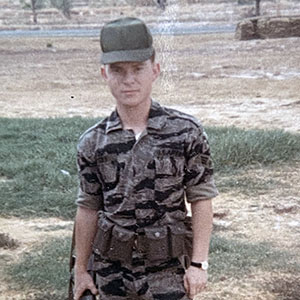
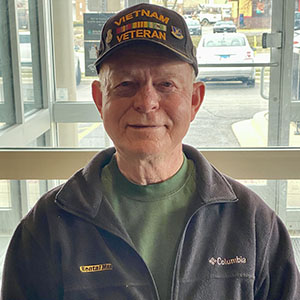
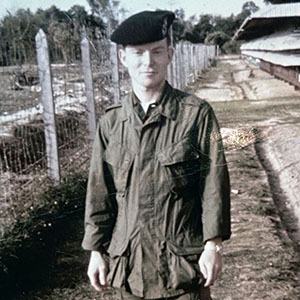
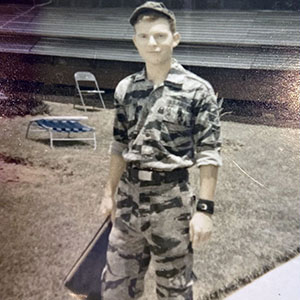
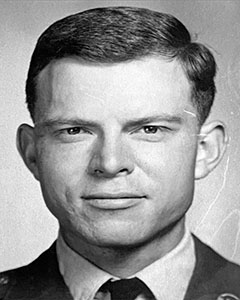
After a year in Alaska, Paul was transferred to Stead Air Force Base outside Reno, Nevada. At the time, the base was primarily used for helicopter pilot training and also as a survival school. While Paul was generally responsible for base security, he recalls one time when he was assigned to do law enforcement. He pulled over a jeep that had run a stop sign but quickly realized that the driver was Hubert Zemke, the deputy base commander and legendary World War II fighter ace. When Paul realized who he was, he stepped back, saluted, and said, “please be advised that you ran a stop sign, and have a Merry Christmas.” Paul says Zemke was a very nice guy, and whenever he saw him after that he’d smile and give him a thumbs up.
When it was time for him to leave Stead, Paul requested to be stationed in the Midwest so he could be close to his family for his last posting. Instead, he was assigned to Southeast Asia, and he says he was fine with not getting his requested assignment. Before going, he was sent to jungle warfare school, but because the regular schools were so busy, he went to one in Texas. Upon completion of this training, he requested a 14-day leave, but because of the great demand for transportation to Southeast Asia at the time, he ended up with a leave of 52 days. He eventually flew to Thailand on July 1, 1966.
There were approximately 50,000 US personnel in Thailand at the time, although their presence wasn’t publicized and the operations were generally secretive. The Air Force operated out of eight air bases, which were owned by Thailand but operated by the US Air Force. Paul was stationed at Ubon Royal Thai Air Force Base, which was 17 miles from Laos and 50 miles from Cambodia. The Thai and Australian air forces had some planes there, but the majority of the aircraft were American F-4 Phantoms and C-130 flare ships, plus other American planes that came and went on a regular basis.
Just like in other parts of Southeast Asia, there was a communist insurgency in Thailand at the time. Given the number of planes and vast amount of munitions, base security was of paramount importance. The base frequently came under harassing small arms and sniper fire, although most of it was ineffective. Paul himself was shot at several times but never hit. Periodically, though, the insurgents were successful. Paul recalls a time when a guard was approached by two Thai men who shot him point-blank in the neck and stole his weapon. He was fortunate to survive. Shortly after Paul left the base, he heard that it had come under attack, with two planes being destroyed and six sappers killed.
One tragic story Paul recalls was when two F-4s were about to leave on a night mission. The first one took off successfully, but when the second one cut in their afterburner, the entire back of the plane went up in flames. Paul and his team rushed to the plane, but when they saw that the two crew members had successfully gotten out, they raced out of the area to take cover. Shortly thereafter, the plane exploded, and only one of the crewmen survived. They found out later that the explosion involved the plane’s fuel tank but only one of the many bombs the plane was carrying. Fortunately, the other bombs, including multiple cluster bombs with delayed fuses, had been blown clear of the fire. Paul was less than 100 yards from the explosion and temporarily lost his hearing. He spent three days in the hospital, and while his hearing eventually returned, he still has hearing problems to this day.
He left Thailand on July 24, 1967, and returned to North Aurora. He got married in 1968, and he and his wife had four children throughout the 1970s. He worked for United Airlines for seven years and then worked with his father-in-law and brothers-in-law at an equipment rental business, which he eventually bought. He was remarried in 2006, and between him and his current wife, they have eight children and sixteen grandchildren.
In the early 1980s, when his kids were older and he had more free time, Paul realized that he missed the camaraderie he had enjoyed in the military and decided to join the Air Force Reserve. This second stint in the military, more than fourteen years after the first one ended, lasted for 21 years. At various times he was assigned to Kuwait, Panama, England, Spain, Germany, Japan, and Italy. He also provided security for Air Force One several times when it was at O’Hare. In 1983 he was chosen as the Air Reserve Forces Airman of the Year and received his award at a banquet in Washington, DC. He also was chosen multiple times to compete in the Peacekeeper Challenge, a competition for security personnel from around the world. Only eight men from the Reserves were chosen to participate, so this was a high honor. At 36, he was one of the oldest competitors, but that didn’t stop him from being in the top four out of 250 competitors in rifle shooting. In 2002, after 25 years of service to his country, he retired with the rank of master sergeant.
In 1981, when Paul decided to rejoin the military, he went to O’Hare to sign up. While there, he bumped into a man named Godfrey Lawson whom he hadn’t seen since 1967. Paul and Godfrey had arrived in Thailand on the same day in 1966, lived in the same hooch for 13 months, and coincidentally they both left Thailand on the same day in 1967. They didn’t keep in touch after getting home and hadn’t seen each other for 14 years until that day at O’Hare. In a further amazing coincidence, they were both at O’Hare that day for the same reason—to enlist in the USAF Reserve. Since then, they’ve kept in touch, and while it unfortunately didn’t work out for the two of them to be on the same Honor Flight, the bonds of their service to their country remain strong.


